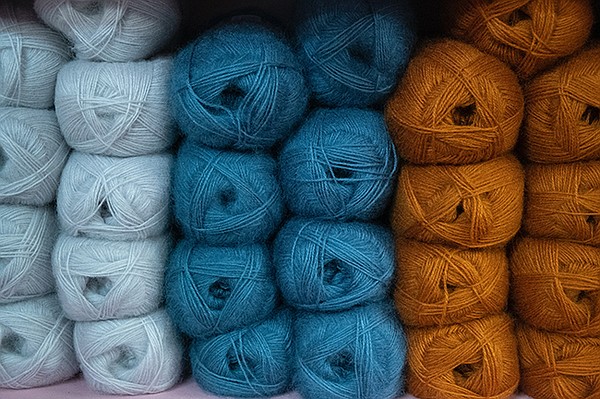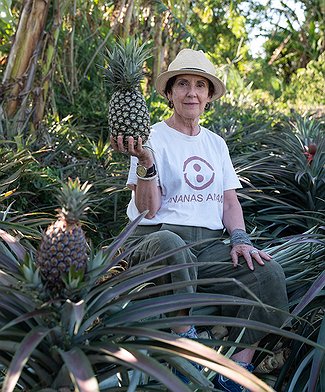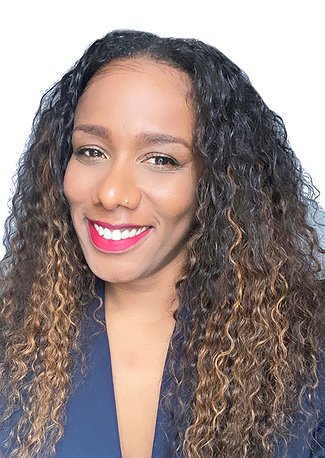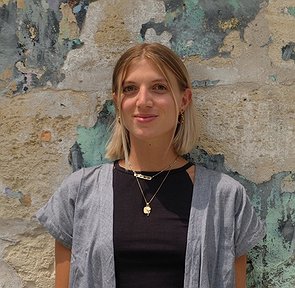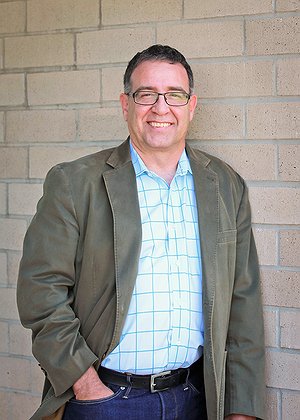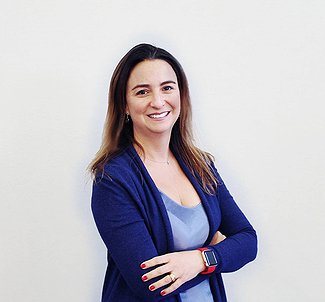INDUSTRY FOCUS
Fiber, Yarn and Fabric: Identifying Underrated Textile Resources
Sourcing for textile production has experienced many changes over the last decade. Calls for the industry to become more sustainable while the business continues to be influenced by consumer demands for immediate access to trends have driven innovation to deliver greener goods at a faster pace. The apparel industry has also experienced shifts as supply-chain challenges within the last three years are leading brands to diversify their sourcing to avoid production pitfalls.
During this time of greater examination of how fiber, fabric and yarn are sourced, previously under-recognized regions of the world are now experiencing an upswing in attention for their abilities to deliver materials on a faster schedule through a more innovative approach or with stronger ecological foundations.
California Apparel News asked experts in fiber, yarn and fabric: What region of the world should be afforded more attention for its contributions to fiber, yarn or fabric, and why do you feel the experts and artists in this particular area deserve a brighter spotlight?
Wes Burgess
Chief Product Officer
37.5 Technology
When thinking about leading fiber, yarn and fabric offerings, we tend to immediately start thinking about where these products are produced—places like China, India and Taiwan. However, we often forget about the development process that happens well before initial test batches of such products even hit the floor. Without fail, every single time I visit a foreign supply partner, the question they are anxious to ask and often becomes the focus of discussion is: “What’s new in the U.S.?”
From a production standpoint, the U.S. textile industry has struggled in recent decades due to higher costs of labor, materials and other economic, political and social factors, but the world continues to look to us for the innovation and thought leadership that drives the industry. From specialty high-efficiency equipment enabling smaller production quantities to groundbreaking new ingredient technologies providing proven consumer benefits, the U.S. is often overlooked for its role in innovative new textile products and processes. The highly educated workforce in the U.S. contributes immensely by way of revolutionary R&D, sustainability practices, novel production capabilities and general market trends.
During my travels, my background often comes up as a point of small talk, but when my associates learn that I attended North Carolina State’s textile program, the small talk turns into something much more serious. They recognize the institution’s position as one of the top textile universities in the world and are eager to engage on another level. They understand and appreciate the innovative contributions the U.S. is making to the textile industry and want to know what’s on the horizon.
Carlo Centonze
CEO and Co-founder
HeiQ Group
Asia is often pointed out as a source of concern for the widespread adoption of practices nonaligned with the planet’s needs. However, many of our partners in that region are catching up with the trends and directives that compel businesses to produce without depleting Earth’s resources.
A large share of man-made fibers such as polyester comes from there, and major mills and conglomerates are aware of the need to make a decisive shift.
MAS Holdings, a Sri Lankan company living by the code of ethical responsibility and sustainability, is one of those inspiring models in the textiles, fiber and yarn sector. HeiQ has been doing business with them for over a decade, which has set the groundwork for the recent partnership established between both our companies, involving HeiQ AeoniQ, the cellulosic fiber that makes it possible to render polyester obsolete by 2030.
Over the course of its impressive 35-year journey, MAS has gained international recognition for its commitment to creating an ethical and sustainable workplace. The company’s notable efforts in promoting social development and women’s empowerment have made it an advocate for positive change within the industry. Its Plan for Change epitomizes the dedication to a better world, with a focus on products, lives and the planet.
MAS Holdings’ visionary leadership understands the imperative of innovation, collaboration and scalability in reshaping the apparel industry and steering it toward a more sustainable future. A key driver of this transformation is HeiQ AeoniQ, showcasing the company’s commitment to adopting cutting-edge technologies and sustainable processes, showing everyone that we can make things differently, improving the lives of billions.
Dr. Carmen Hijosa
Founder
Ananas Anam
In 2022, Ananas Anam enabled the creation of over 550 jobs in rural farming communities in the Philippines and Bangladesh to create premium textile-grade fiber such as Piñatex from pineapple leaf. Seventy-five Indigenous leaf harvesters have been employed in Mindanao, Philippines, providing a stable and fair source of income.
After the pineapples have been harvested for food, the leaves of the plant, which are considered waste, are either left behind to rot or burned. Ananas Anam partners with farming cooperatives and partner farms to collect these waste pineapple leaves. The suitable plant leaves are collected in bundles and then processed into Anam PALF, a premium textile-grade fiber, and then made into products like Piñatex and Piñayarn.
In the past, the pineapple farmers have been solely reliant on selling the fruit, and the income has been very seasonal. By valorizing their leaf waste, Ananas Anam creates diversified and additional income streams and has created jobs in the rural areas of the farming communities.
Jen Hodo
Business Development Manager
Birla Cellulose
The Indian textile industry has progressed from traditional spinning wheels and handlooms to state-of-the-art technology, design innovations and global best practices in quality and sustainability. India boasts the world’s second-largest textile industry, with an ancient legacy dating back thousands of years. Today, India’s robust textile ecosystem, encompassing everything from fiber to fashion, stands as a cornerstone of the country’s entire economy.
India stands out for its diverse and dynamic textile industry, showcasing an impressive aptitude for crafting products tailored to global consumer preferences. Suppliers offer expertise in handling a wide array of materials ranging from natural to synthetic.
India’s rich legacy of craftsmanship and diverse regional fabric traditions also sets it apart, embodied through the wide range of options available such as indigo, batik, ikat, Banarasi silk, dabu and countless others. In a seamless blend of traditional expertise and modern creativity, artisans throughout the country infuse new innovative spirit into the homegrown textiles that have passed through generations.
Government support has been critical to this remarkable evolution. The Indian textile industry benefits from various initiatives like the Scheme for Integrated Textile Parks and the Mega Integrated Textile Region and Apparel Park. These measures aim to foster growth, enhance competitiveness and promote sustainability within the textile sector, adding further desirability to India as a sourcing destination.
Juliana Jabour
Business Development Manager, South America
Lenzing Fibers
Looking into the Brazilian textile market we see a unique and vibrant tapestry that reflects South American culture and heritage. It blends rich cultural diversity with sustainable innovation to inspire material innovation and artistic liberties from fiber to fabric to fashion. The Brazilian region has a huge local supply-chain environment to handle yarn spinning, fabric development and design with a huge local-fashion network of brands and designers to not only embrace style but also carry the spirit of Brazil’s colorful heritage to share with the global industry.
Ron Kaufman
Sales Manager, Manufacturing Division
Robert Kaufman
There are few advanced industrialized countries that have maintained their textile infrastructure from large mills to smaller artisanal fabric producers in the way Japan has. Of course, it isn’t all smooth sailing, but Japan has retained manufacturing in key textile categories and excelled in marketing their fabrics to a worldwide audience that appreciates the quality, craftsmanship and heritage.
Japanese fabrics offer tremendous value to brands and the consumer and compete very well on cost when you factor in considerations such as quality, reliability and MOQs. We know from the U.S. experience, once a country loses its textile infrastructure it’s very difficult to reestablish, so kudos to Japan for its efforts and ability to keep it going.
Virginia Rollando
Director of Sustainability
Veshin Factory
Generalizing by country or region can’t be the correct way to assess whether a fabric, yarn or fiber is sustainable because we are experiencing the same concept on a factory level. China has been seen as a country with low social and environmental standards, and, of course, this is based on real examples that did not respect the planet.
However, there are amazing factories in China that promote a new model for fashion through the empowerment of employees, going beyond all legal requirements and the reduction of emissions through a range of waste-reduction programs, energy savings and renewable electricity production—and the participation in a circular economy.
Our trusted supplier Hemp Fortex is playing a key role in the adoption of hemp, a resource that has often been cited as the sustainable-fiber of the future. Hemp had a bad reputation due to being classified incorrectly as an illegal drug.
Today, however, with more than 70 varieties, we see it as a critical fiber in our sustainable-fiber toolkits. Hemp is known for its ability to capture carbon from the air and can also decontaminate polluted soils. It also requires a significantly less amount of water to grow compared to cotton, and many fashion and apparel brands use hemp for its durability due to its long staple lengths.
China’s ability to contribute to the scaling of sustainable-material alternatives is evident as there is an extremely advanced ecosystem of factories and technical knowledge. Given that most finished-product factories are in the region, it only makes sense for sustainable fibers, yarns and also next-gen materials to be produced there, too.
In terms of artists that deserve a better spotlight, we would highlight African crafts with Burkina Faso cotton and natural indigo, Indigenous weaving techniques in Vietnam, Guatemala and Colombia. All artists around the world deserve a better spotlight. With the slower and more sustainable fashion model that we are working toward, we hope that they will achieve this.
David Sasso
CEO
Genesis AdvanceTech Engineering
It’s not about the regions, per se, but about which countries, regions or entities are able to cross-pollinate intelligence from different fields of use. Companies will protect their IP. But governments and organizations can lead to solve the environmental issues of our planet by sharing the findings to the industries. This is already happening to some extent, but implementation is slow.
Sustainable solutions to reduce greenhouse-gas emissions in the textile industry are often right in front of us. It’s a common challenge in the business world where companies develop innovative products or solutions in silos without collaborating or sharing their knowledge. What’s missing is a collective focus and collaboration among manufacturing supply chains, think tanks, academia, brands and retailers, and end user.
Each of us holds a piece of the puzzle to solve our environmental challenges. Collaboration and breaking down these silos can lead to even greater advancements and efficiency in various industries, including textiles.
Carolina Sister Cohn
Global Marketing Leader, Textile
Eastman Naia
When it comes to the global arena, there are, of course, different regions that are at the forefront of fashion innovation; however, one of the key challenges nowadays for fiber and fabric producers is to also maximize geographic proximity to brands and their consuming markets—what is usually called “nearshoring.”
Europe is among the most influential regions when it comes to brands with disruptive potential, and we at Eastman Naia are committed to offering them more and more-effective solutions that leverage our network of excellence of value-chain partners close to their final markets; therefore, mainly in Portugal, Italy and Turkey. The U.S. is also a very important region as it is home to some pioneering brands for innovation and sustainability such as Reformation and Patagonia.
The only factory in the world that makes our revolutionary Naia Renew is right in the U.S. The original Eastman manufacturing facility is in the beautiful Appalachian Mountains of Kingsport, Tenn., and its history dates back over a century. Then there is also our key network of partners in South America and Central America, which supports us in making sure we can stand by U.S. brands with quality and efficiency while further enhancing the unique sustainable approach of Naia fibers with shortened supply chains that are far less carbon intensive.
Katie Tague
Vice President of Denim Marketing and Sales
Artistic Milliners PVT LTD
During my time with Artistic Milliners, they have expanded their overall nearshoring strategy expansively. Because of this, I have had the opportunity to see such a wonderful development in our newest strategic partnership in Guatemala through our L.A. laundry and full-package facility SFI and Denimville. We have chosen them as our partners in Guatemala as the experts and artists at Denimville are actively pursuing several sustainable initiatives aimed at reducing water, energy and chemical usage. They have adopted Jeanologia’s EMI metrics to measure the environmental impact of garment-finishing processes and are incorporating Denim Forward’s wash technology. Furthermore, they are considering investments in automatic-cutting technology to enhance quality and efficiency.
Compared to production originating from Asia, the SFI network can save six to seven weeks of transportation time, enabling customers to respond swiftly to trends, avoid retail markdowns and offer just-in-time deliveries. Additionally, SFI’s digital-product-creation team streamlines the sampling and production timeline by employing 3D-design software such as Browzwear and CLO to assist clients in refining their designs and fit.
This collaboration follows SFI’s announcement in June about the opening of its first office in Guatemala City. We believe in expanding and supporting business out of this region and feel the newest partnership with Denimville will help shine a light on the efforts of them and SFI to create excellence and speed to market.
Andrea Venier
Managing Director
Officina39
In a globalized world it is difficult to think of focusing on a single region as global interconnections push us to consider global situations. Each region has its own specialty on the fashion chessboard, depending on cultural, historical and geographical aspects. For example, from the point of view of fabrics and yarns South Asia comes to mind, in particular Bangladesh—a country that has invested heavily in new technology in recent years, confirming itself as one of the most advanced countries from this standpoint.
When talking about technology we cannot fail to mention Europe and, of course, Italy, a region that remains an excellent technological hub for the textile sector. The stated goal of technological growth in recent years is to ensure the quality of solutions while reducing the ecological impact of processes. Italy is proving to be excellent in this, merging its creative tradition with sustainable goals. But creativity is sown all over the world, and artists always make great contributions to fashion style and creativity in Europe, the United States and South America. Colombia, for example, is one of the most active South American countries from a creative standpoint.
Sherry Wood
Director of Merchandising
Texollini
Being fully vertical and based in the USA, Texollini takes full accountability for the fabrics produced at our mill. With that in mind we are very strategic on sourcing a wide variety of yarns. Listening to our brands and their needs is a critical part of the decision-making process.
Currently we have a focus on the Central America region, in nations also known as “CAFTA countries,” which are Guatemala, Nicaragua, El Salvador, Honduras, Costa Rica and Dominican Republic. There are more investments in these countries because brands want faster deliveries to react to the marketplace and for smaller order sizes. About 50 percent of our brands are currently doing production in these regions.
Texollini is also continuing to have our brands focus on staying in the U.S. There is a desire always to have made-in-USA products; the challenge is always price. But since COVID we have noticed there is a stronger push to make goods here. We have incredible yarn and fiber manufacturers located in the Southeast, which we work closely with, as well as a large variety of cut-and-sew manufacturers based in California.
The benefits are to promote USA-made goods that have a higher perceived value and strong marketing messages behind them, especially around sustainability. Brands can work closer to markets with quick turnaround times to meet all of their demands of bestselling styles and market trends. It also gives the opportunity for startups and small brands to have smaller order sizes and grow from there.
*Responses have been edited for clarity and space.
